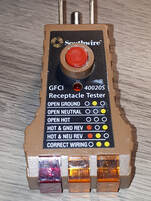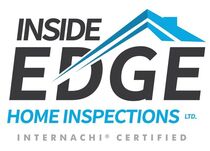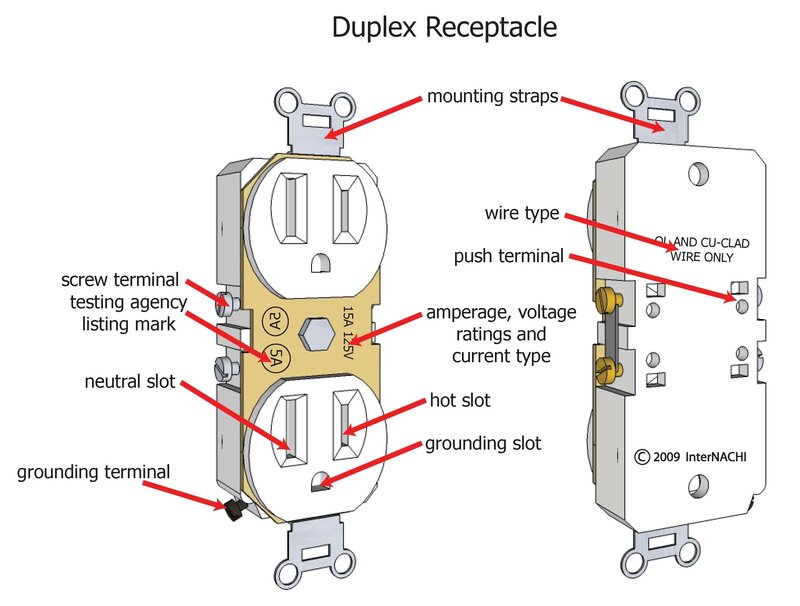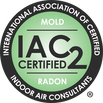Mike's Home Inspector BlogMichael Burfitt |
|
According to the InterNACHI Standards of Practice, there are a number of items all members must inspect to meet the minimum requirements. The one category that has by far the most items to inspect is electrical. There are couple of main reasons for this: the first is that electrical work can be expensive (it is mandatory to be licensed in Nova Scotia for a very good reason!) and many of the issues are hidden and can be very dangerous, even fatal. Today I am going to talk about something that any homeowner can do on their own to check their electrical system.  Nearly everyone in North America knows what these are and every home has dozens of these duplex receptacles. As can be seen in the diagram above, the short slot is for the hot (or energized) pin, the left is for the neutral pin that connects to the wire that completes the circuit back to the grid and the semi-circular slot is for a ground (or emergency path) pin. These outlets can also be installed with the ground on top and while this isn't common in residential properties it is both acceptable and safe. The tester pictured here can be bought at any home improvement store for an affordable price and used by any home owner or tenant to gather quick diagnostic information. While they are not perfect, they can help identify some significant electrical issues. Let us run down all the various fault codes on this particular tester and what they mean: Open Ground This is the most common condition I see and it may either be a systematic or localized problem. What this means is that the detector does not sense a emergency path in the case of an electrical fault. Grounding has been required in both Canada and the United States since the 60s and is especially important in objects made of metal as they conduct electricity. Without a ground wire, the electrical path may use your body as a way to get back to source and this could lead to anything from a nasty shock right up to cardiac arrest. There are a number of reasons for this, which can range from a simple slipped wire to a complete lack of grounding protection in the home that requires a complete and expensive home rewiring to correct. Open Neutral This means there is a disconnect detected on the neutral wire. Simply put, in most cases two things will happen: the device plugged in won't work since there is no return circuit and you may receive a nasty shock as the outlet is still energized. This is a dangerous situation that needs immediate correction by an electrician. Open Hot This is a case where there is no hot wire connected to the outlet. This is very easy to spot as the outlet will not work as there is no energy source. This is the reason why none of the three lights will come on during an open hot situation. Hot & Ground Reversed This is a rare situation that is extremely dangerous and would be the result of someone who had no idea how to wire an electrical outlet. Like most inspectors I have never seen it and likely never will. This indicator can also be a false positive and could actually mean an open neutral, which while also serious is not nearly as expensive to correct. Hot & Neutral Reversed This is the second most common issue I see after open grounds and can also be known as reversed polarity. This means that the outlet is wired in reverse, where the energy is flowing in the opposite direction from what is intended. This can go undetected for years, even decades as many items (particularly electronics) are not polarized and it doesn't really matter to them which way the current flows. Other items that are polarized, such as light sockets or appliances will be energized even when off and will deliver a nasty, potentially fatal shock if you touch the wrong spot. These testers are not 100% reliable. For example, a tester cannot detect a dangerous condition known as a bootleg ground, where the ground wire is illegally hooked into the neutral wire. This essentially means that the GFCI protection needed in wet areas is removed and the entire casing can become energized. This is one reason why if it is safe to do so I attempt to take off every electrical panel cover I see to inspect for proper wiring and grounding: if the panel isn't grounded (mostly due to age) and the outlet tester says it is, this can be a symptom of a very serious problem. Another way to put this is that a tester is just one of many tools a home inspector uses to perform their duties. It is important to note that all electrical work in Nova Scotia is required to be done by a licensed electrician. These testers are a great diagnostic tool but unless you know what you are doing, contact an electrician to correct any issues in a home. While their services can be pricey, it is not worth losing your life or burning your home down to save a few hundred dollars. |
Archives
July 2024
Categories
All
|
|
Inside Edge Home Inspections Ltd.
Halifax, NS 902-209-9921 [email protected] Proudly Serving the HRM & Central Nova Scotia |



 RSS Feed
RSS Feed

